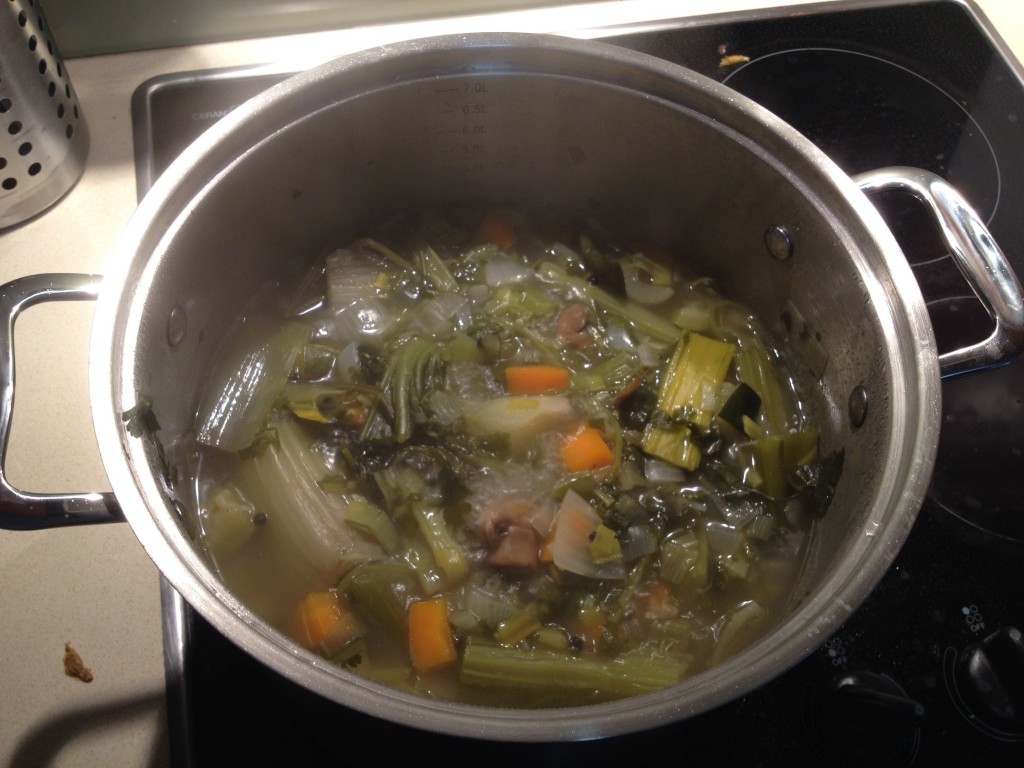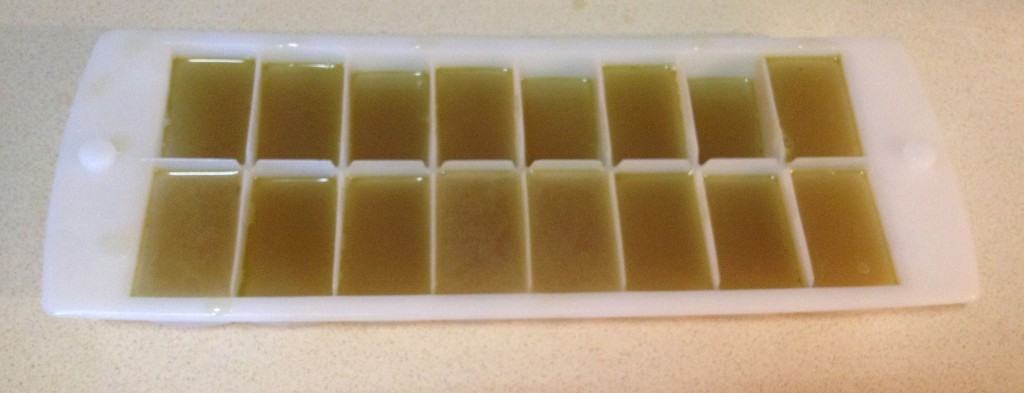Vegetable stock is one of those things that it is really useful to have on hand, it can add delicious depth and flavour to a whole range of dishes, as well as being an integral parts of soups, risottos and other dishes. Making my own stock has always been high on my to-do list, but the idea of buying fresh veggies purely to turn them into stock then dispose of them just didn’t sit right. That was until I realised you can just as easily make vegetable stock out of your food scraps, making the whole thing practically free!
I started storing cut offs, peelings, the leafy stalks or stems in a container in my freezer, as they retain their flavour and nutritional value and the texture doesn’t matter for stock. After a few weeks I had quite the collection of odds and ends, and it was time to make stock!
In the few days before I knew it would be stock-making time I stored anything I had leftover in the fridge, including half an onion, the green part of a leek and some carrot. This allowed me to first sweat these vegetables with some garlic to really release their flavour, adding some additional depth to the stock. It’s not a vital step, but I’d recommend it.

So, which vegetables should you use, or more importantly avoid?
Vegetables To Use
Carrots, onion and celery are pretty much the backbone to any stock so keep any ends, peels, leftovers etc that you can. Other great vegetables to add include leek, beans, zucchini, capsicum, corn cobs, parsnips, spring onion, chard, mushrooms, asparagus, eggplant and herbs including parsley, basil and thyme. Don’t add to much of any of the stronger herbs like coriander (a little is fine) as they can tend to overpower the flavour if you’re not careful.
Vegetables To Be Careful With
Beetroot will turn your stock purple, onion skins can turn it brown and potato can turn it cloudy, so think about what you might want to use it for before adding any of these. They can add a great flavour which might be all you need for a soup like minestrone, but might not be quite what you’re after for other dishes.
Vegetables To Avoid
Cruciferous vegetables like broccoli, cauliflower, cabbage, brussel sprouts, artichokes etc are best to avoid in your stock as they will overpower the flavour and can result in a somewhat bitter stock. So it’s straight to the compost for them unfortunately!
Also skip adding anything that has gotten a little mouldy – somewhat limp is okay, but if it’s past that point it should go straight in the compost as well.
So, to make the stock it’s as simple as:
- Roughly chop any non-frozen scraps like onion, garlic, carrot, celery and leek and sweat them in a large saucepan with a little bit of water until translucent and softened – 5-10 minutes
- Add the frozen vegetables and enough cold water to cover them as well as a some black peppercorns
- Bring to the boil then simmer with the lid off for 1-1.5 hours
- Strain the vegetables out then leave to cool before placing in jars or food safe containers to freeze
If you’re not sure if you’ve been simmering long enough you can scoop out a little of the liquid into a glass and check the colour – if it is still quite transparent then you need to simmer longer, but if it’s starting to get deeper in colour then it should be full of flavour.

You can keep some stock in the fridge if you’re planning on using it within a few days, but any longer than that it’s best to freeze it. I tend to pour some into ice cube containers so I have small portions on hand if I just need to add a little to a dish.
Now I have a freezer full of delicious stock and it didn’t cost me any additional money! Can’t go wrong with that!
Do you make your own stock? What are your favourite vegetables to include in it?





